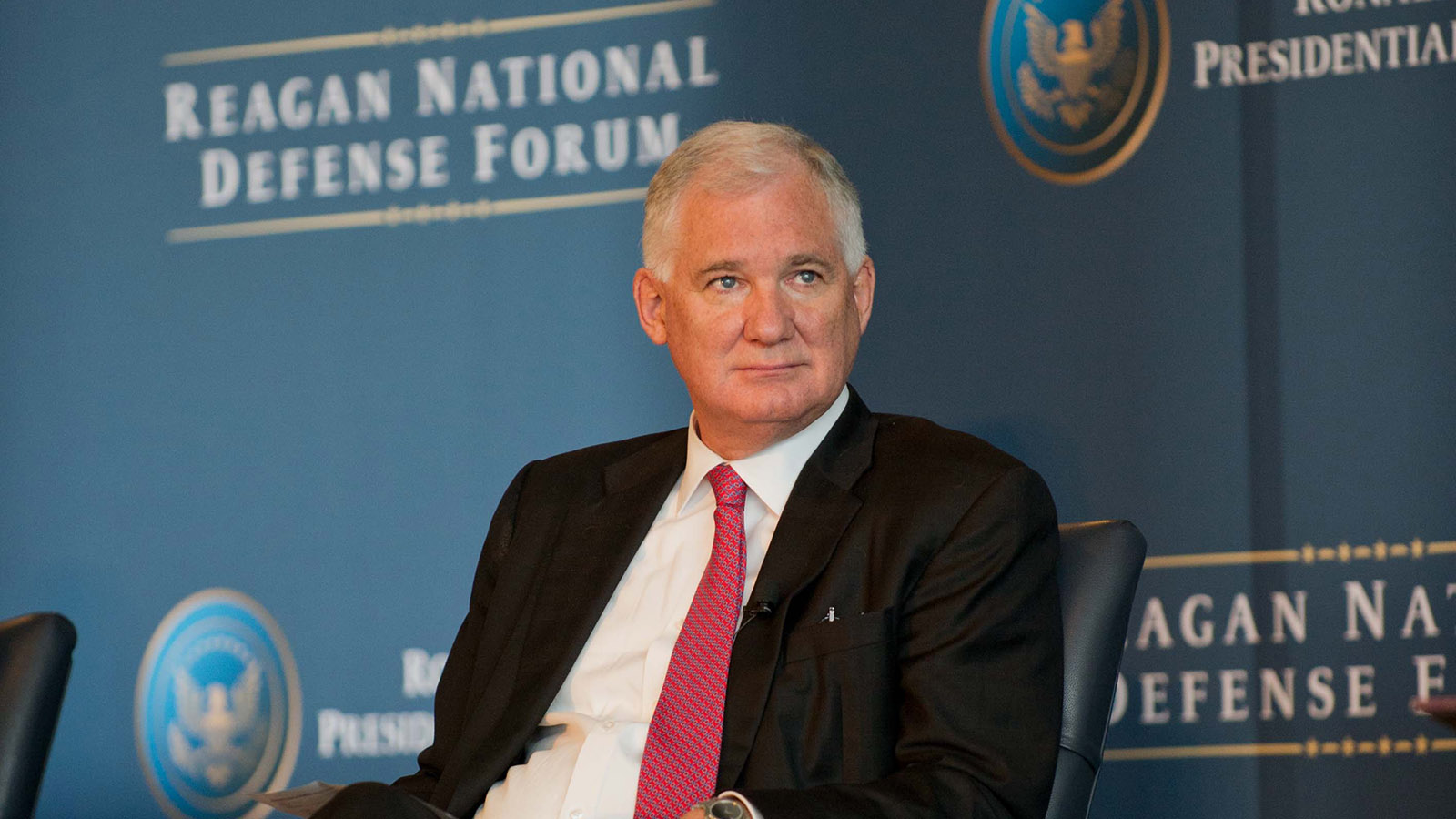
William J. Lynn III, CEO of Leonardo DRS, appears at the Reagan National Defense Forum in this undated photo. (Courtesy Leonardo DRS)
WASHINGTON — Leonardo DRS is on track to begin trading on the NASDAQ stock market shortly after Thanksgiving, in a move the company’s head believes will free up cash for, among other things, greater acquisition activity in the future.
In an October interview with Breaking Defense, Bill Lynn, CEO of the American subsidiary of the Italian defense giant, said he expected all the paperwork to be done “in the immediate period after Thanksgiving” to allow the company to launch as a traded stock. A company spokesman this week confirmed that the expectation is that the stock would go live sometime “around the end of November/start of December” timeframe.
The process, which kicked off with the June acquisition of Israeli firm RADA, is not a traditional IPO where companies go around trying to actively pursue investors. Instead, through a reverse merger process, Leonardo DRS will be able to hit the stock exchange immediately upon the paperwork being finalized, with a built-in clutch of investors — those who already held RADA stock — in place.
Leonardo DRS had looked into a traditional IPO in 2021 but ultimately killed those plans given the response they got. When they looked at RADA, it was purely as a merger and acquisition move that would give DRS a new radar portfolio. But once the deal started coming together, the potential for the reverse merger became clear, Lynn said.
“We didn’t need to do the risk of the cost, or the long period for a IPO. Instead, we do this reverse merger, and we instantly get the NASDAQ” spot, Lynn said in the Oct. 11 interview. And because the company didn’t need to worry about finding investors during the holiday season, getting up and running at the end of the year isn’t a problem, he said: “You don’t wait. Once you’re ready, you go.”
As to the benefits of an IPO? For Lynn, “you can answer it at a number of levels.”
At the level of Italian parent-company Leonardo, the company gets a stock on a US exchange. “That should improve [Leonardo’s] valuation just because of that. It also gave them a way to monetize part of the DRS value without giving up control,” Lynn said. “As a global aerospace and defense company, you’re not global if you’re not in the world’s biggest market, right? So they’re not giving that up, but they are able to use some of those resources tied up here to do other initiatives.” That includes potentially using funding for other M&A activity in Europe.
Locally for DRS, it creates a more independent operating entity, one with “our own balance sheet, we have our own governance, we have our own board, we have our own stock — that gives us much more strategic flexibility to build,” Lynn said. “We’ve had great organic growth over the past several years. This gives us the ability to also look at acquisitions, as part of increasing the value — which going back to [Leonardo], of course they want us to increase our value — but it gives us a way of self-financing acquisitions.”
And for the RADA stakeholders, the acquisition means the company is no longer going it alone when they run up against the biggest US firms. “They’re now moving into a world where [they’re fighting for] programs of record,” Lynn said. “So, they’re facing big US primes, and they’re saying, you know, we need a bigger partner to play in this part of the world. We need some more scale, we need some manufacturing expertise, we need more investment capacity. And we need it in the US market, which is where most of their business, even though it’s an Israeli company, most of their businesses is here.”
Overall, Lynn said, the company is “trying to spread our wings a bit” in terms of what DRS can offer the US military, with a focus on four key business areas: advanced sensing, network computing, force protection and electric power and propulsion.
“We bring a lot of the capability of the larger guys without the same, you know, number of layers, without the same cost structure,” he said. “We’re more agile, we’re able to turn to [the service’s] priorities faster than most, and produce something in a compressed schedule and to bring that combination of agility and technology that is somewhat unique to the mid-tier.”
Army eyes TBI monitoring, wearable tech for soldiers in high-risk billets
“We are also looking at what additional personal protective equipment we can provide to our folks, especially instructors and others who are routinely exposed to blast pressure,” said Army Secretary Christine Wormuth.


























